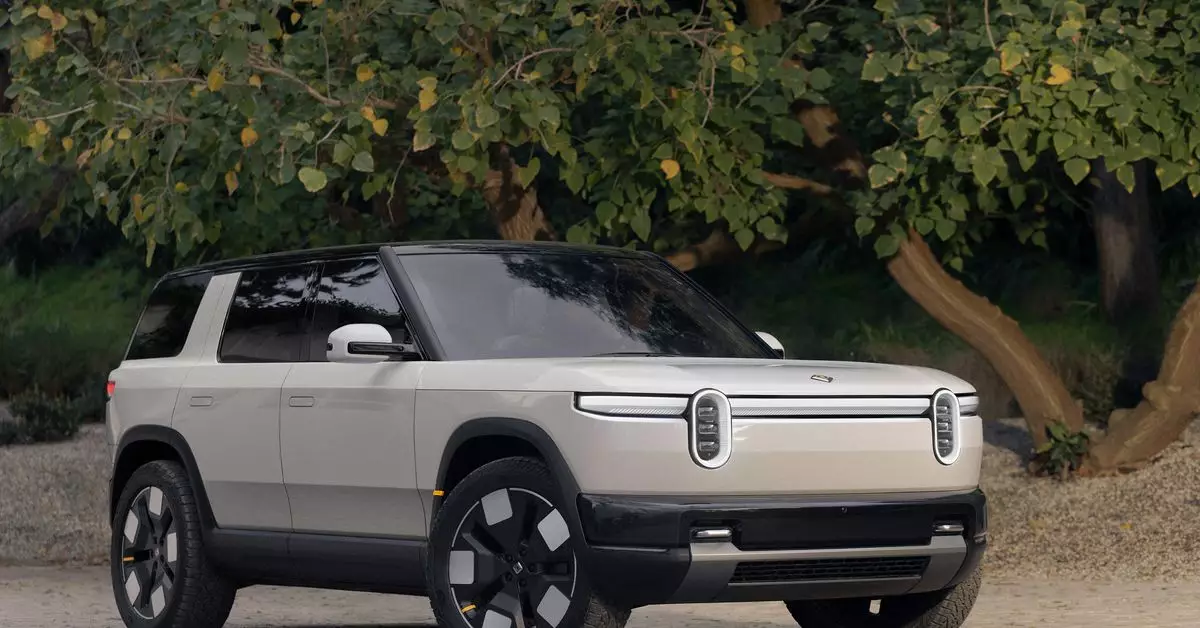In recent months, Rivian has made headlines with its forward-looking plans for battery production and vehicle development. As the electric vehicle (EV) sector continues to evolve rapidly, Rivian’s announcement regarding its R2 vehicle line not only underscores the company’s ambitions but also shines a light on the broader dynamics influencing the EV market. This article examines Rivian’s new battery strategy, the implications of shifting battery sourcing, and the challenges that lie ahead in an increasingly competitive landscape.
Rivian is poised to introduce its R2 vehicle series, which promises to be more accessible than its predecessors. With a starting price of $45,000, the R2 seeks to attract a broader customer base — a strategic move in a market that increasingly values affordability alongside sustainability. At the core of this initiative is a new battery cell design, the “4695,” which features a larger size than the well-known Tesla 4680 cells. This battery cell, measuring 46 millimeters in diameter and 95 millimeters in height, aims to provide greater efficiency and power density.
Rivian’s decision to partner with LG Energy Solution highlights a significant shift in its supply chain strategy. The model now envisions domestically produced batteries as a response to regulatory pressures stemming from the Inflation Reduction Act (IRA). This act emphasizes the need for domestic manufacturing to qualify for tax incentives, thereby prompting Rivian to establish a production line that aligns with these guidelines.
The move to manufacture batteries within the United States is not just about compliance; it also represents a strategic realignment for Rivian. Previously, the batteries used in Rivian’s R1T and R1S models were sourced from South Korea’s Samsung SDI. By shifting production to LG’s new facility in Queen Creek, Arizona, Rivian aims to streamline its operations, reduce costs, and enhance efficiency. The company has indicated that the new battery packs are expected to be lighter and simpler to produce, achieving a projected 45% improvement in assembly processes.
This transition is especially crucial as automakers race to adapt to a changing regulatory environment that rewards domestic production while tightening restrictions on imports. As a result, Rivian’s manufacturing decisions reflect a proactive approach to maintaining competitiveness amid rapidly changing EV policies.
While Rivian’s innovations are promising, the company must contend with various challenges that could impede its progress. The electric vehicle market is becoming more crowded, with traditional automakers ramping up their efforts to penetrate this sector. Companies like Ford and General Motors are investing heavily in EV technology, which may threaten Rivian’s market share.
Moreover, the changing political landscape cannot be overlooked. The potential return of Donald Trump to the presidency raises questions about future EV subsidies. Trump’s administration has hinted at revisiting policies that could limit incentives for EV manufacturers, which would further strain financially vulnerable companies like Rivian. If such changes come to fruition, it could catalyze a market crisis, particularly for new players in the EV space that lack the resources or scale to weather drastic shifts.
Rivian’s timeline indicates that production for the R2 vehicles is slated to begin in the first half of 2026. However, given the uncertainties in both policy and competition, it remains to be seen how the company will navigate these tumultuous waters. Strategic collaborations with companies like LG Energy Solution place Rivian in a favorable position for battery innovation, but they also come with the pressure of delivering on promises in the face of broader market dynamics.
Rivian stands at a crucial juncture, where technological advancement and strategic decision-making will be paramount in shaping its future. As the EV market continues to evolve, Rivian must leverage its unique strengths while adapting to external challenges to ensure its longevity and success in an increasingly competitive landscape. The coming years will reveal whether Rivian can sustain its momentum or if the shifting tides will prove too great to overcome.


Leave a Reply